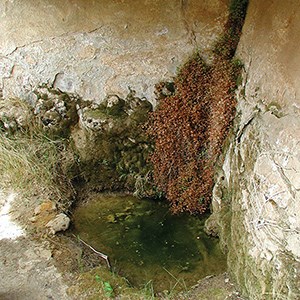All the EssentialsThe scene in the above photo was one of many Mesa Verde neighborhoods inhabited in the 1200s. The families who lived in the area depended on this landscape to meet their daily needs and to support a rich, full life. This landscape served as their pharmacy, grocery, clothing, and hardware stores. Knowledge of the locations and best uses of natural resources was passed down from generation to generation. Take a moment and scan the cliffs, canyons, and mesa tops. Where would you look to find essential resources like those described below in the Mesa Verde landscape? 

Water from seep springs often emerged between two layers of rock; sandstone and shale. Some shale layers provided additional material that Ancestral Pueblo people needed to make items like pottery, mortar, and plaster—clay! 




|
Last updated: April 21, 2025
